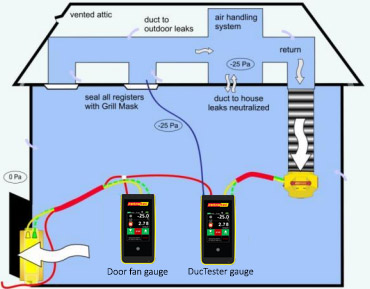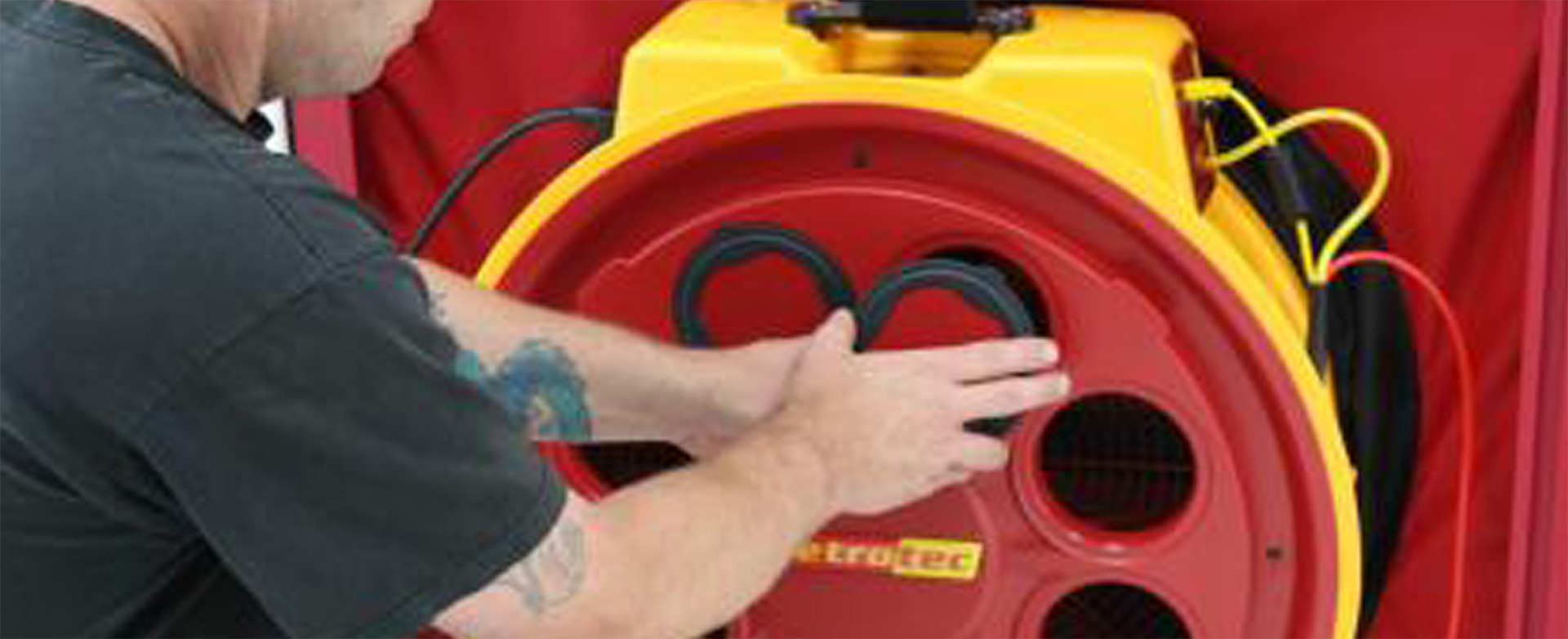Is Duct Leakage To The Outdoors Always Needed?

Duct leakage to outdoors tests are needed, even if duct work is within the conditioned space
If ducts are installed completely within the conditioned space do we need to test them? The International Energy Conservation Code (IECC) requires we only test duct work if it is outside the conditioned space, such as an un-insulated attic or basement. If we do test them, is total duct leakage enough, or are these leaks still finding their way to the outside? These questions are always popping up on online HVAC communities.
Looking at the surface of the issue, it might appear to be pointless to do a duct leakage to outdoors test if the ducts are completely contained within the envelope. This would be the case if the ducts themselves were on the “surface” but most are hidden in wall cavities, which often connect to the outdoors to some degree. Any duct leakage will then be partially to the outdoors (via the walls) as well as to the indoors.
Keep in mind, some of the leakiest duct systems are in two story buildings where the space between the floors is used for returns. These spaces connect to the outdoors through joist cavities. These leaky cavities will depressurize a large portion of the exterior walls, filling them with outdoor air – creating huge energy losses from the building and ducts, and pulling moisture into the wall cavities. Not only does this lead to higher heating/cooling costs, but moisture in the walls can lead to mold growth and degenerate the structural integrity of the building over time – even bigger costs to repair.
If the house is new construction at the rough in, then that is a different story. A case for not testing the leakage to outdoors could then be made if ALL duct work is clearly visible and is contained within the conditioned space.
Let’s say the building envelope is near perfect and the ducts aren’t leaking to outdoors, only indoors. If there is no leakage to the outdoors, since all the heated/cooled air is staying within the home, why test the duct system at all? There are two main reasons: first, the homeowner is paying for an elaborate control system to regulate the amount of conditioned airflow into and out of different zones in the house, but a leaky duct system can ruin the effectiveness of any HVAC control system. Second, leaky ducts (especially on the return side) can pick up insulation, dust, pest debris, and other harmful allergens and blow them into the house. This can create health risks for occupants, in addition to comfort issues.
Unfortunately, most duct work is hidden within walls will always have some amount of leakage to the outdoors. Only in cases where all duct work is clearly visible and contained within the conditioned space, could the case be made to not test leakage to outdoors. Still, any leakage from duct work needs to be addressed to improve the energy efficiency of conditioning systems, as well as the health and comfort of homeowners.




